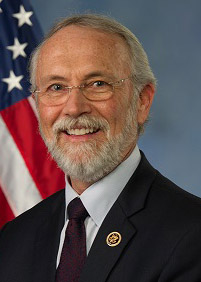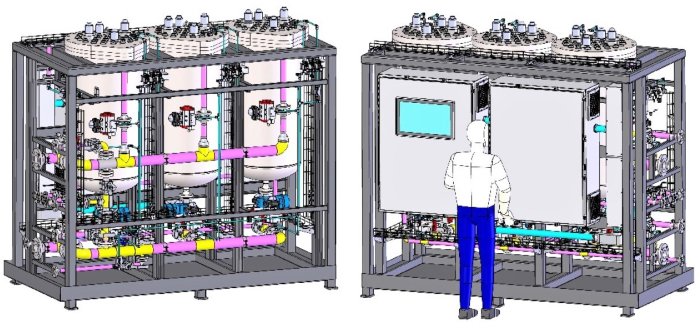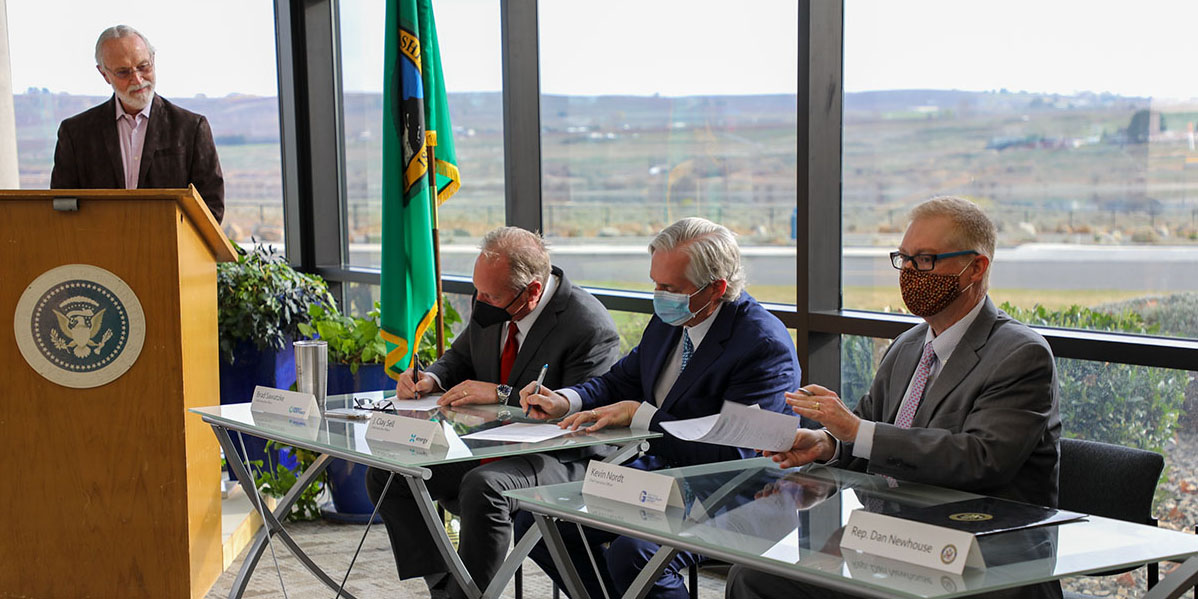Workers remove asbestos siding panels from a Portsmouth Gaseous Diffusion Plant building. Photo: Business Wire
Fluor-BWXT Portsmouth, a joint venture of Fluor and BWX Technologies, along with engineering company Jacob, have received a contract extension valued at up to $690 million, including options, from the Department of Energy. The contract, announced April 6, is for environmental management work at the former Portsmouth Gaseous Diffusion Plant near Piketon, Ohio.
Byron Generating Station. Photo: Exelon
The University of Illinois Student Section and Chicago Local Section of the American Nuclear Society hosted a webinar, The Role of Nuclear Power in Illinois, on Wednesday, March 31. The webinar provided information for state lawmakers and the general public about the potential consequences of closing the Byron and Dresden Generating Stations, two of the nuclear power plants in the state of Illinois.
The webinar recording has been archived and is available for viewing for free at the above link.
Dry cask storage at the closed San Onofre Nuclear Generating Station in Southern California. Photo: Southern California Edison
Saying they are cautiously optimistic that the Biden administration can change the U.S. trajectory on nuclear waste, some Stanford University experts have offered their recommendations on how it can be done in a recent Stanford news posting.
A prototype neutrino detector deployed outside Unit 2 at Dominion Power’s North Anna Generating Station in Mineral, Va. Photo: Steve Mackay, Virginia Tech
Barakah-1 (right) is now providing reliable and sustainable electricity around the clock. Photo: ENEC
Unit 1 at the United Arab Emirates’ Barakah nuclear power plant has entered commercial operation and is now providing “constant, reliable, and sustainable electricity around the clock,” the Emirates Nuclear Energy Corporation (ENEC) announced this morning. ENEC added that, as a result of the event, the company now leads the largest decarbonization effort of any industry in the UAE.
The outside of the DIII-D tokamak, where testing that supports the development of the Compact Advanced Tokamak has been performed. Photo: General Atomics
Scientists at the DIII-D National Fusion Facility have published research on a compact fusion reactor design they say could be used to develop a pilot-scale fusion power plant. According to General Atomics (GA), which operates DIII-D as a national user facility for the Department of Energy’s Office of Science, the Compact Advanced Tokamak (CAT) concept uses a self-sustaining configuration that can hold energy more efficiently than in typical pulsed configurations, allowing the plant to be built at a reduced scale and cost.
An artist’s rendering of Natrium. Image: TerraPower
Around the world, national and local policymakers and business leaders are making bold and ambitious commitments to clean energy goals. In the United States, one in three Americans now lives in a city or state that has committed to or has achieved 100 percent clean electricity, according to the Luskin Center for Innovation at the University of California–Los Angeles.
Photos of physicist Alessandro Bortolon and the element boron; graph and photo showing the interior of a tokamak. Credit: Alexander Nagy and Alessandro Bortolon/Collage courtesy of Elle Starkman, PPPL
Research led by scientists at the Department of Energy's Princeton Plasma Physics Laboratory (PPPL) provides new evidence that particles of boron, the main ingredient in Borax household cleaner, can coat internal components of doughnut-shaped plasma devices known as tokamaks and improve the efficiency of the fusion reactions, according to an article published on Phys.org on April 2.
Fig. 1: The layout of a typical SMR-160 site.
Holtec International’s SMR-160 is a pressurized light-water thermal spectrum reactor that relies on natural circulation, thereby eliminating the need for reactor coolant pumps during normal operation. The reference design incorporates a lower pressure conventional steam turbine and wet cooling via a tube-and-shell condenser coupled with forced-draft cooling towers. Optionally, the plant can use dry cooling via Holtec’s HI-KOOL air-cooled condenser.
Miners depart Niger’s Akouta uranium mine for the last time after production ended for good. Photo: Cominak
The Akouta mine in Niger stopped production on March 31 after 43 years of service and 75,000 metric tons of uranium extracted. Akouta, the largest underground uranium mine in the world, was operated by Cominak, a subsidiary of Orano. The shutdown was decided by Cominak’s board of directors on October 23, 2019, in response to the depletion of the mine’s deposit.
ANS flooding and seismic consensus standards assist the NRC and DOE in buttressing nuclear facility safety policies
April 2, 2021, 2:47PMNuclear NewsLeah Parks, Carl Mazzola, Jim Xu, and Brent Gutierrez A map of Japan highlighting the Fukushima prefecture.
March 11 will mark the 10-year anniversary of the Fukushima Daiichi event, when a 45-foot tsunami, caused by the 9.0-magnitude Great Tohoku Earthquake, significantly damaged the reactors at Japan’s Fukushima Daiichi nuclear power plant. In response to this event, the U.S. Nuclear Regulatory Commission took actions to evaluate and mitigate beyond-design-basis events, including a new requirement for the staging of so-called Flex equipment, as well as changes to containment venting and improvements to emergency preparedness. The U.S. Department of Energy also addressed beyond-design-basis events in its documented safety analyses.
A front-and-back illustration of the new Hanford ETF filter system, which is intended to eliminate the need to shut down operations every 12 hours to replace filters during wastewater processing. Image: DOE
A new wastewater filter system being installed at Hanford’s Effluent Treatment Facility (ETF) is expected to increase waste processing throughput, improve efficiency, and save money as the site in southeastern Washington gears up to treat tank waste, the Department of Energy announced.
U.S. Rep. Dan Newhouse (R., Wash.) observes as (from left) Energy Northwest CEO Brad Sawatzke, X-energy CEO Clay Sell, and Grant PUD CEO Kevin Nordt sign the TRi Energy Partnership MOU on April 1 at the Port of Benton in Richland, Wash. Photo: Energy Northwest
Building the nation’s first advanced reactor is the goal of a partnership formed between X-energy, Energy Northwest, and the Grant County (Washington) Public Utility District (PUD).
The TRi Energy Partnership will support the development and demonstration of X-energy’s Xe-100 high-temperature gas reactor, which was selected by the Department of Energy for a cost-shared commercial demonstration by 2027 through the DOE’s Advanced Reactor Demonstration Program (ARDP). The new partnership was announced on April 1, when Clay Sell, X-energy’s chief executive officer; Brad Sawatzke, Energy Northwest’s CEO; and Kevin Nordt, the Grant County PUD’s CEO, met in Richland, Wash., to sign a memorandum of understanding.




















 The North Carolina State University (NCSU) Libraries Department and the Department of Nuclear Engineering are collaborating to build
The North Carolina State University (NCSU) Libraries Department and the Department of Nuclear Engineering are collaborating to build